A Caper through KK
Kota Kinabalu was our first stop in Malaysia, and left us a little culture shocked but also charmed.
COUNTRIES
After fourteen hours of travel, we arrived in Kota Kinabalu from Tokyo at half past midnight. Fortunately we had an incredibly smooth customs intake and a short 15 min cab to our hotel. I even had time to stop and grab a local SIM (I appreciate the hustle of multiple SIM vendors at 1 am). Our main reason for coming to Borneo1 was to see wildlife and parts of the rainforest, both of which are sadly being pushed to extinction.2 Kota Kinabalu, or KK as its fondly called, would be our jump off point for traveling deeper into the jungle over the coming days. We also made the conscious choice to stay in Sabah, the northern part of Borneo, as this would reduce intra-country transfers and limit the number of flights we would need to take, as flying is the only reasonable way to get around in most cases. Borneo is a massive island and spans three countries, including Brunei in its entirety and part of Indonesia in the South. Our home base, a city of roughly 250k pop., seemed like a nice place to access the island national parks of Tunku Abdul Raman, and catch an incredible sunset.
We started our stay with a local hike to a mangrove wetland preserve. We were the only people on the boardwalk trail. It was damp, littered with tiny crabs, lizards, and, sadly, plastic waterbottles, and frankly left us a little creeped out. But along the way, we noticed at least one snake in addition to several cranes and other birds, and to Dana’s delight, we spotted a family of river otters! The woman at the front desk had showed us a loop route through the mangrove, and noted the last section of the loop trail was not a boardwalk but led back to the entrance. But when we arrived at that last section, the trail sign pointed left and the board walk steps descended into at least two feet of mangrove water and mud!! There was no way were stepping in that! We walked back the way we came.
We also made a stop at the nearby mall, which has become a bit of a travel habit of ours after our time in Korea, and seemingly a good bet for cheap, tasty food wherever we’ve been thus far. We had an average meal in one of the upper food courts with an ocean view before continuing our jaunt around town. Along the water was a bustling market, full of extremely large seafood options primed for preparation. There is also a local craft market, but oddly it seemed closed and was full of smoke. A fire wasn’t apparent, but the air was quite harsh so we made our way back to the hotel to prepare and rest and prepare for the next day’s island hopping.Tunku Abdul Raman is a series of four island parks, all with public access but some more heavily populated with private resorts. They provide great access to beaches, snorkeling, diving, and an array of water sports, and took maybe 10 min to access the farther islands by speed boat. We went to the local terminal and opted for two islands offering jungle trek and snorkeling (Gaya and Mamatik) and boarded with a group of other beach goers. Our first stop, north side of Gaya, offered a small beach and jungle trek. After maybe a dozen mosquito bites in the first five minutes, we made the executive decision to prioritize beach time. An hour or so later, our boat came by and ferried us to Mamatik, just in time for lunch. While eating, we were joined by a four foot monitor lizard, casually walking by! After lunch, we tried snorkeling, though couldn’t see much in the cloudy water (turns out it was the wrong tide), so we just enjoyed some fresh coconut juice, some beautiful exotic flowers falling from the trees, and the warmth of the ocean before heading back. Our evening included a sunset dinner at a giant resort that made up a whole section of the south side of town, where the view did not disappoint–reds, and pinks, and fluffy clouds as the sun sank below an ocean dotted with islands.
Our last day in KK proved to be full of highlights, both cultural and culinary. Dana located the Monsopiad Heritage Village, a short drive outside of town which proved to be informative and highly entertaining. Lucy, our guide, told us the story of the historical patriarch of this village, a man renowned for collecting and preserving 42 shrunken heads. The village was Koisaan, the largest tribal group in Sabah. The religion (and practices more disturbing to western folk, like head taking) traditionally practiced by the Koisaan and his village seemed to have ended roughly 30 years ago, but the land is still owned by their descendants, and they maintain the village and building for historic preservation. Lucy had much less dark bit of culture to share with us. We got tastings of local herbs and spices, including a type of wild ginger and a sour mango, several alcohols from fermented rice and herbs, and most memorably a type of grub eaten live WHICH DANA PROCEEDED TO CONSUME! I don’t have the stomach for this survivor-featured activity, so we proceeded to the gaming area.
It’s funny how games have evolved from essential skills and experience; in the village, they balanced on walking sticks and coconut husks and practiced dart shooting, all in service of necessary survival skills. For instance, the walking sticks could elevate one when crossing a river where a bridge did not exist, just as the dart throwing was used for hunting. Other games, like picking up bottles with screws on a stick, or mancala (which Dana recalls fondly having played in elementary school--how worldly of them to have a traditional Malaysian game!) were just for fun and played during their main harvest festival. We are excited to adopt some of these for inclusion in next year's Rendezvous Games!
We tried all of the above to our great joy and delight before touring the mini-museum and resting before the cultural show. Lucy and a dozen other village staff treated us to a series of fast and slow local dancing and music, and we were invited to take part which proved to be quite fun and memorable. We bid our farewells and returned in town for errands before dinner. Dana had scoped out an Hungarian restaurant in her handy dandy guide, and the food proved to be quite remarkable (despite us both ordering neither Hungarian nor Malay plates). Well fed and rested, we retired before our travels resumed early (around 5 am) the next day to the rainforests of northern Sabah.
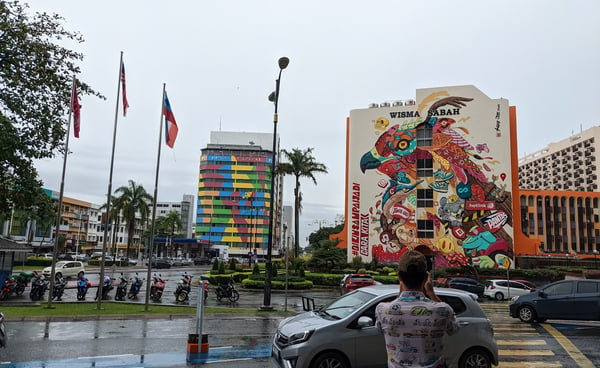

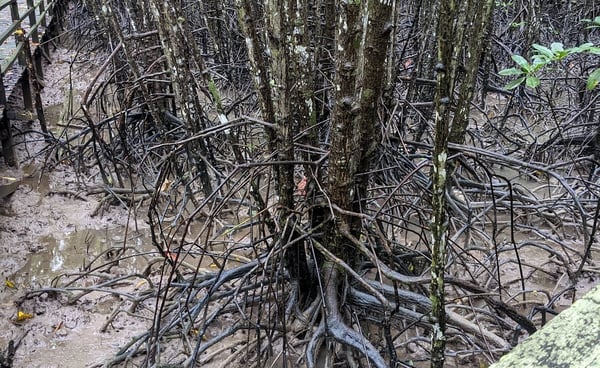

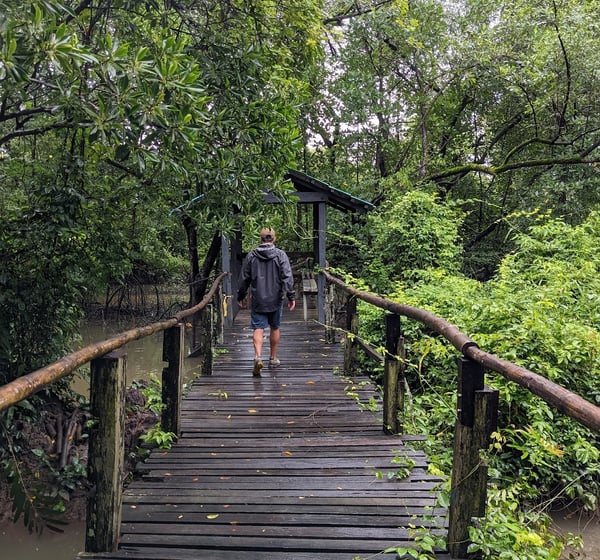

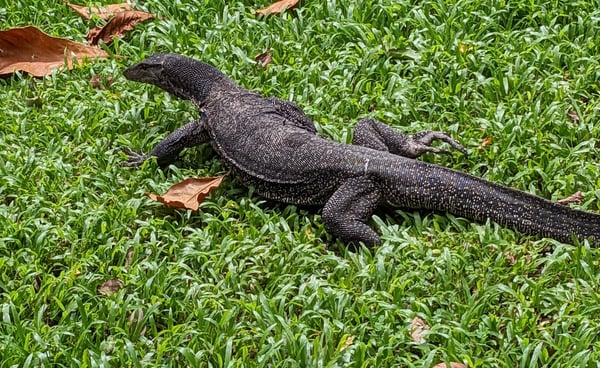

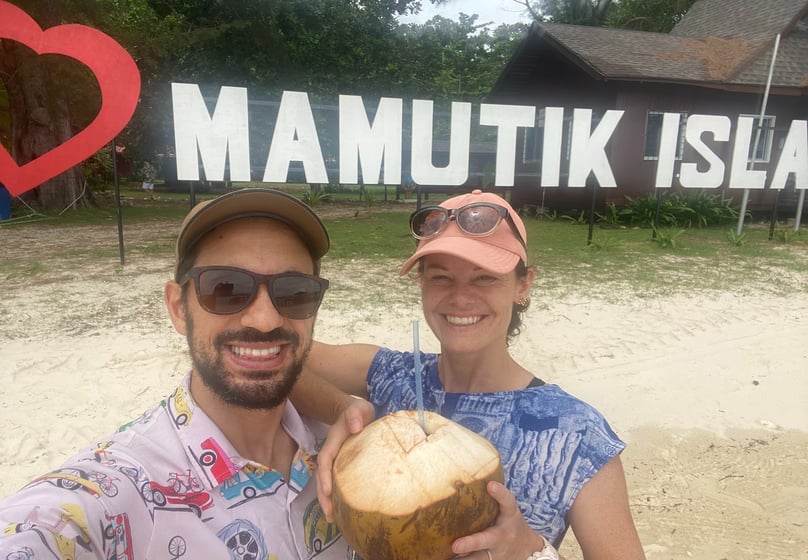

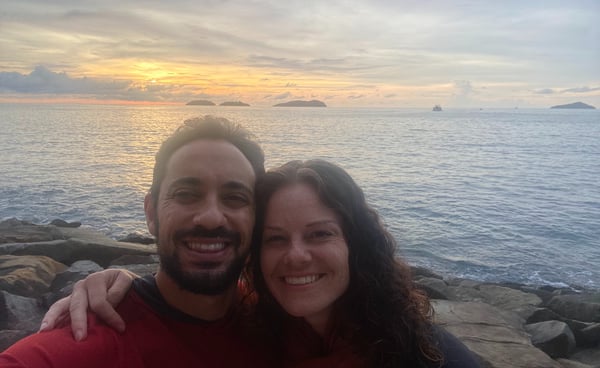

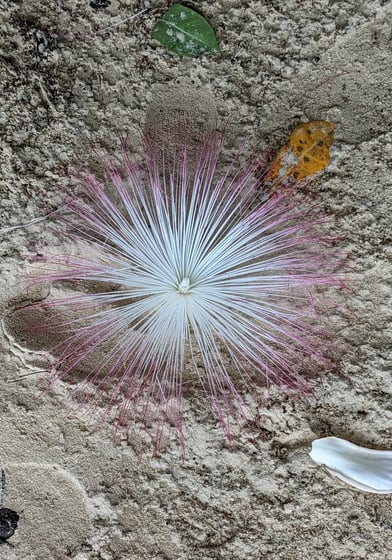

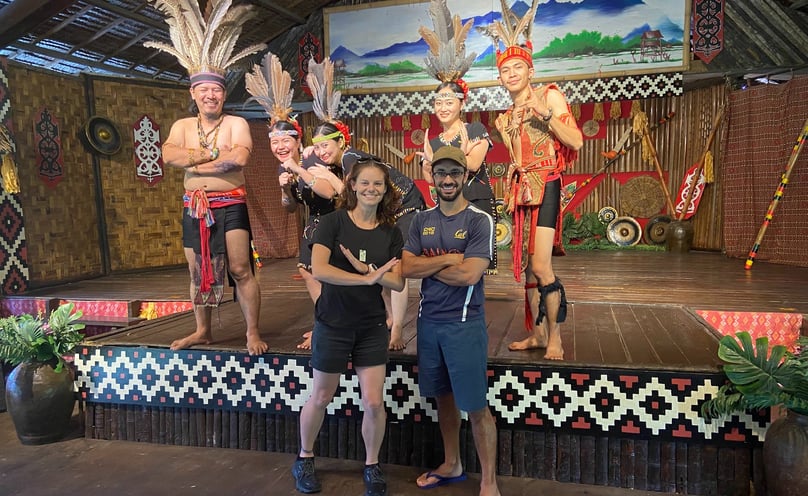

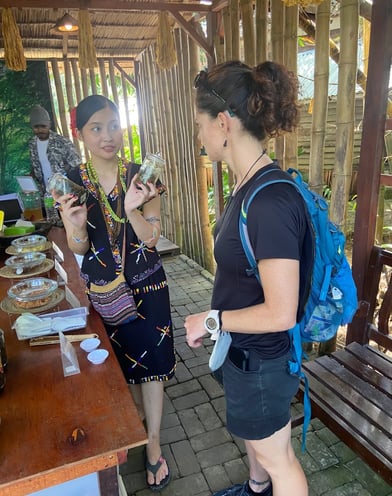

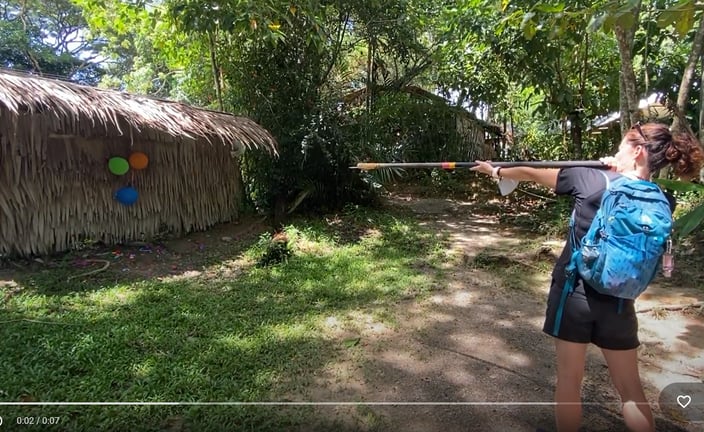

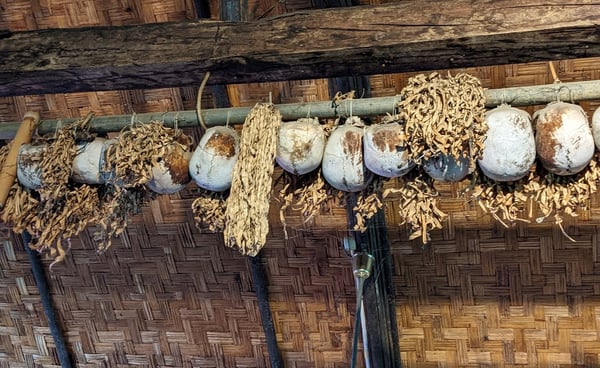

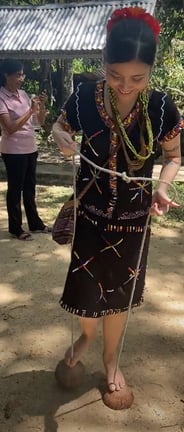

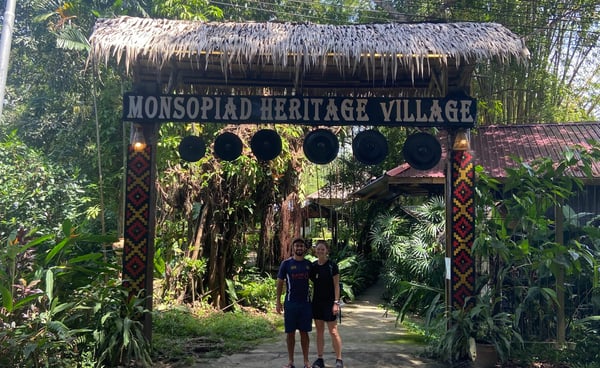

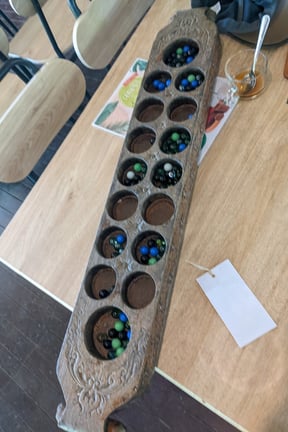

A true mangrove. Somewhere back there is a family otters!
The boardwalk thankfully kept us above the mud and snakes. The crabs joined us up there though!
Gayly painted buildings helped brighten the damp and somewhat polluted skies of KK.
The grass doesn't give you the perspective, but this monitor lizard was over 4ft long! Along with the coconuts and beautiful flowers, he contributed to island glory of Makutik and KK sunsets.
Above: Lucy, our favorite guide at Monsopiad, shares tribal specialty foods we could try. Behind her is the final course--live grub--which only Dana had the courage to try. We joined her and the other staff in trying out some traditional dancing. Below, the entrance and the human heads for which the village is famous.
We loved all the tribal games, that are now usually played during their harvest festival; walking on coconuts, Mancala board game, shooting balloons with the blow darts and more!
We miss home and want hear from friend and family blog readers! Drop us a note!
Footnotes:
1) Short geography lesson from Dana here. There is so much about Borneo I did not know we before researching this trip. First off, there are 878(!) islands that make up Malaysia. The biggest section is not an island, but a peninsula, connecting to there rest of the Asian sub-continent via Thailand. Borneo Island includes the second largest chunk of Malaysia, broken up into two major states: Sabah and Sarawak. But Borneo ALSO includes a chunk of Indonesia (known as Kalimantan) AND the tiny nation of Brunei. Fun fact: Borneo is the only part of both Malaysia and Indonesia that is volcanically stable. Fun Fact two: Indonesia has announced its moving its capital (curently Jakarta on the island of Java) to Kalimantan in the next few years in order to relieve the state government from climate change threats (Jakarta already flood regularly), traffic, and volcanic activity.
2) Climate change, illegal hunting, and other factors are leading to the loss of the Borneon rainforest and its eco-diversity. However, the number one cause of loss, is the taking of land for growing palm trees in order to satisfy the world’s palm oil demand. More than two-thirds of Malaysian island is already turned over to the monoculture of palm and we saw it as far as the eye could see as we drove across the countryside.
